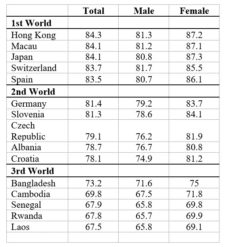
Behavioural risk factors, such as smoking, obesity, alcohol use and diet, accounted for around 19 per cent of the gap (AHMAC 2017).įigure 7.1: Life expectancy at birth by Indigenous status, 2015–2017 Social determinants are estimated to be responsible for at least 34 per cent of the health gap between Indigenous and non‑Indigenous Australians.

Life expectancy is an overarching target, which is dependent not only on health, but the social determinants (such as education, employment status, housing and income). This is a gap of 8.6 years for males and 7.8 years for females. In comparison, the non-Indigenous life expectancy at birth was 80.2 years for males and 83.4 years for females (Figure 7.1). In 2015–2017, life expectancy at birth was 71.6 years for Indigenous males and 75.6 years for Indigenous females. The life expectancy target is measured using the Australian Bureau of Statistics (ABS) estimates of life expectancy at birth, which are available every five years. The target to close the life expectancy gap by 2031 is not on track. However, this has coincided with an increase in cancer mortality rates, where the gap is widening. Since 2006, there has been an improvement in Indigenous mortality rates from circulatory disease (heart disease, stroke and hypertension).However, non‑Indigenous mortality rates improved at a similar rate, so the gap has not narrowed.

Over the period 2006 to 2018, there was an improvement of almost 10 per cent in Indigenous age‑standardised mortality rates.In 2015–2017, life expectancy at birth was 71.6 years for Indigenous males (8.6 years less than non-Indigenous males) and 75.6 years for Indigenous females (7.8 years less than non-Indigenous females).Close the life expectancy gap within a generation (by 2031) Key points


 0 kommentar(er)
0 kommentar(er)
